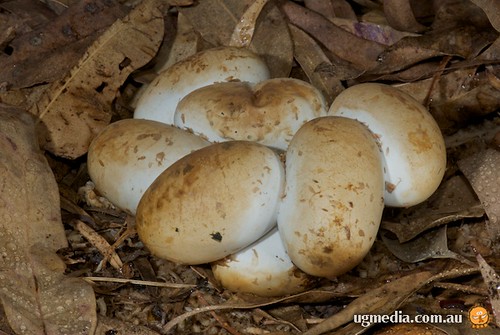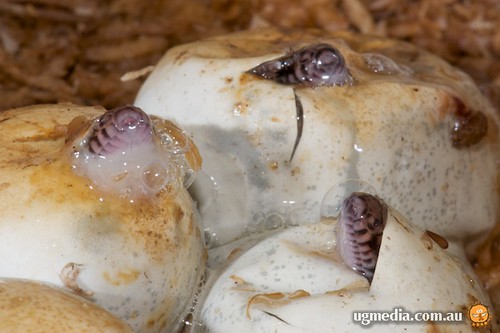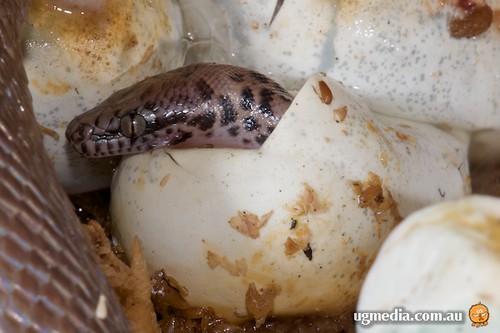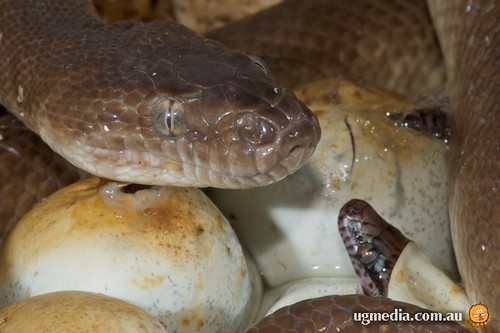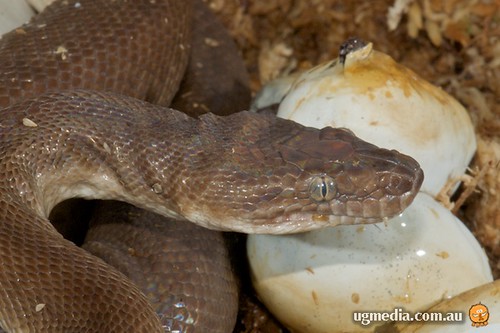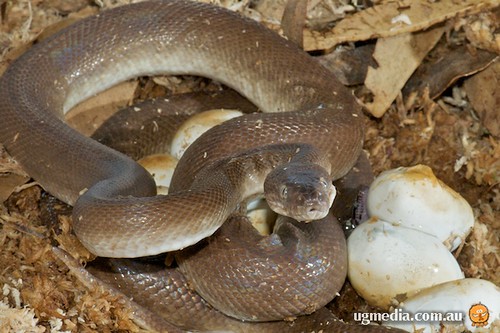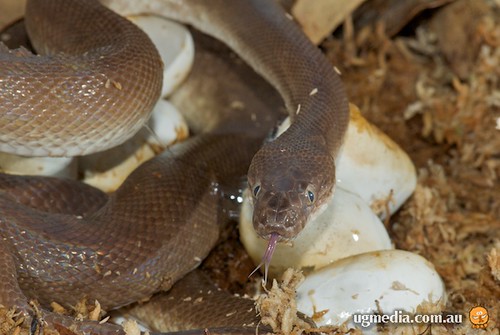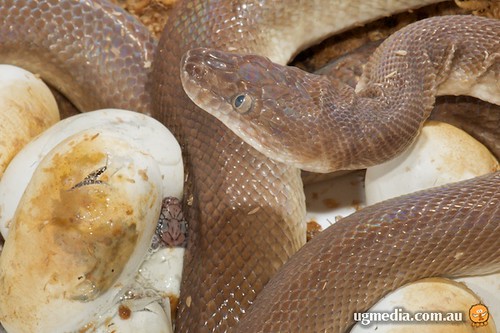seein it the time when all the babies are hatching have been doing a bit of reading and wondering why people take the eggs off the mother and into an incubator? this doesn't get done in the wild so why do we. sure the success rate would be higher but after all isn't that what the mother is for anyway. share ur thoughts and would like to hear from anyone who has left there eggs with the mother. i hope to be breeding in the next couple seasons so would like ur input.
You are using an out of date browser. It may not display this or other websites correctly.
You should upgrade or use an alternative browser.
You should upgrade or use an alternative browser.
why take them off the mother
- Thread starter dig3283
- Start date

Help Support Aussie Pythons & Snakes Forum:
This site may earn a commission from merchant affiliate
links, including eBay, Amazon, and others.
- Status
- Not open for further replies.
KRONYK94
Well-Known Member
im not a breeder so would agree to you in one point.
but wouldn't the mother get a bit angry with her babies taken away from her all the time.
i know they go into a trance but they don't do it for nothing.?
but wouldn't the mother get a bit angry with her babies taken away from her all the time.
i know they go into a trance but they don't do it for nothing.?
wranga
Very Well-Known Member
i incubate all clutches to hopefully improve the hatch rate. ive never maternally incubated so i really dont know if i improve or not. i do know that i control both temperature and humidity which should give the eggs abetter chance. also by taking the eggs im able to feed my female earlier, stopping her from losing anymore condition.
GeckoJosh
Almost Legendary
One of the reasons is if you plan on breeding her every year then she will lose to much condition by incubating herself and wont be able to take breeding every year
PilbaraPythons
Very Well-Known Member
Geckoman has nailed the answer.
However, if you aren't too concerned with breeding every single season, maternal incubation I can promise you, will give you great satisfaction. Providing of course you set the brooding female up correctly in the first place, she will do a fantastic job as long as her clutch is not too big to control e.g. her ability to wrap her body around her eggs adequately. Even so, eggs outside of the normal adhered together egg mass, can still do okay by themselves but only if the nest area is set up correctly.
I seldom use my incubator now, simply because of the pleasure I get at witnessing a bit of natural behaviour.
However, if you aren't too concerned with breeding every single season, maternal incubation I can promise you, will give you great satisfaction. Providing of course you set the brooding female up correctly in the first place, she will do a fantastic job as long as her clutch is not too big to control e.g. her ability to wrap her body around her eggs adequately. Even so, eggs outside of the normal adhered together egg mass, can still do okay by themselves but only if the nest area is set up correctly.
I seldom use my incubator now, simply because of the pleasure I get at witnessing a bit of natural behaviour.
pythons73
Very Well-Known Member
The only concern i have with natural incubation,in the wild the female can find the correct spot,in captivity she hasnt got much of a choice in a 4 x 2 x 2 feet enclosure...I would imagine the reward would be just the same.But artificially your have more of a chance to breed her the following year, as you have 2-3 more months to get the female back in condition.......MARK
smacdonald
Well-Known Member
I let my female Children's python brood her eggs this year. I had a temperature/humidity logger in there for the entire time, but it unfortunately has stopped working so I haven't been able to download the data. Nine eggs in total, all hatched successfully by themselves. The first one pipped after 62 days, with the last one pipping about 30 hours after that.
Stewart
Stewart
Jumala
Active Member
great photos Stewart!! Love the one of Mum and hatchies head together 
Dipcdame
Very Well-Known Member
Its all a matter of choice I guess, I lean towards letting Mum do it, but then, when the crunch came, and our (supposedly) gravid MD girl sucked us into believing she was getting ready to lay, who do you suppose was the littke black duck that shot straight out to the nearest herp shop and bought an incubator ............ any moral issues about leaving the eggs with mum went STRAIGHT out the window!!!!!!
reptilesDownUnder - those are the most gorgeous photos!!!!! love them!
reptilesDownUnder - those are the most gorgeous photos!!!!! love them!
Omgitschris
Well-Known Member
those photo's of the mum and hatchies together makes me want to let mum do the work herself just so i can witness that. is the hatch rate the same ? and is it easier to let mum do it hersef ?
mungus
Very Well-Known Member
Will try natural incubation 1 day.
Mothers coming up to a shed as well.
Love the photo's !!!
Mothers coming up to a shed as well.
Love the photo's !!!
JasonL
Almost Legendary
I just like watching the female wander around the enclosure for days looking for her eggs, and coiling up on nothing and shivering......but thats just me.
Serpentes
Well-Known Member
- Joined
- Aug 26, 2009
- Messages
- 783
- Reaction score
- 0
.... Even so, eggs outside of the normal adhered together egg mass, can still do okay by themselves but only if the nest area is set up correctly. I seldom use my incubator now, simply because of the pleasure I get at witnessing a bit of natural behaviour.
With maternal incubation is it best to keep the entire cage set to approximately incubator conditions, or allow the female to use shivering thermogenesis/ thermally shuttle and then transfer warmth?
I just like watching the female wander around the enclosure for days looking for her eggs, and coiling up on nothing and shivering......but thats just me.
I'm sure you do, and then you turn her heat off for a few days.
JasonL
Almost Legendary
With maternal incubation is it best to keep the cage set to approximately incubator conditions, or allow the female to use shivering thermogenesis/ thermally shuttle and then transfer warmth?
Just stick the female in a big egg tub and slide the whole thing in the inc
JasonL
Almost Legendary
I'm sure you do, and then you turn her heat off for a few days.
Only after I feed her.
pythons73
Very Well-Known Member
Its a bit a like that..LOL..Such awesome pictures Stewart,natural incubation would alot easier where you are compared to the cooler regions...Theres nothing better than watching the female stress like that is there Jason................MARKI just like watching the female wander around the enclosure for days looking for her eggs, and coiling up on nothing and shivering......but thats just me.
PilbaraPythons
Very Well-Known Member
Serpentes
I believe it would be very hard ( perhaps even cruel ) on the mother if the cage was not set up close to optimum temperatures as likely found in the wild. With this in mind, I set up the entire cage as though it was an incubator. I provide a foam nesting box and have the temperate probe inside that, exactly where the eggs are likely to be laid and set that temperature at close to 31.5 degrees. I always get fluctuations of temperature from about 29 up to 33 and so far have never had any dramas and furthermore have not witnessed any obvious condition loss with mum to worry about.
Regards Dave
I believe it would be very hard ( perhaps even cruel ) on the mother if the cage was not set up close to optimum temperatures as likely found in the wild. With this in mind, I set up the entire cage as though it was an incubator. I provide a foam nesting box and have the temperate probe inside that, exactly where the eggs are likely to be laid and set that temperature at close to 31.5 degrees. I always get fluctuations of temperature from about 29 up to 33 and so far have never had any dramas and furthermore have not witnessed any obvious condition loss with mum to worry about.
Regards Dave
PilbaraPythons
Very Well-Known Member
PilbaraPythons
Very Well-Known Member
- Status
- Not open for further replies.
Similar threads
- Replies
- 2
- Views
- 744
- Replies
- 17
- Views
- 4K
- Replies
- 0
- Views
- 1K
- Replies
- 0
- Views
- 824



